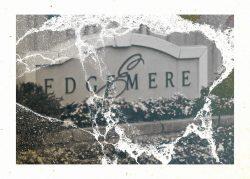While retirement and senior living communities are seen by many investors as promising ventures, the business model carries its own set of risks, including hefty entrance fees.
Here’s how continuing care retirement communities, or CCRCs, sink or swim, according to the Dallas Morning News.
Regulations vary by state. In Texas, the businesses can use entrance fee payments for operating expenses and debt obligations after reaching a certain level of viability.
The average entrance fee in the Dallas market is $435,254, according to data from the National Investment Center for Seniors Housing in Maryland. Expensive? Yes. At the same time, the cost is offset by the fact that monthly fees either don’t increase or increase very little as higher levels of care are needed.
The fee is almost always refundable to residents if they move out, or their heirs, if they die. The repayment, however, is contingent on a new resident moving in and paying a new entrance fee. So if a CCRC is struggling to fill units, repayment can take years.
Alternatively, some CCRCs have steeper monthly payments rather than a single upfront fee.
At the end of 2021, about 74 percent of CCRC independent living units in the U.S. were paid for with entrance fees, whereas only about 26 percent collected monthly rent, according to the latest NIC data.
Read more


From swimming pools and spas to skilled professionals and nurses, CCRCs are highly capital-intensive projects.
“It’s not a cheap way to age,” says Thomas Califano, a partner at a law firm specializing in restructuring CCRC debts. “A CCRC wouldn’t work if the entrance fees were set aside completely. It needs to be done to pay down the bond debt.”
Such a reliance on maintaining high occupancy makes CCRCs very risky, Califano said.
The industry was severely affected by the pandemic and hasn’t seen much recovery since 2020. In the past 12 months, 42 percent of healthcare organizations, including long-term care organizations, defaulted on bond or loan covenants, according to BDO’s 2022 Healthcare chief financial officer survey. Another 25 percent said they were worried about defaulting in the coming year.
Edgemere, a Dallas luxury senior living facility once called the “Ritz-Carlton of senior living,” filed for Chapter 11 bankruptcy earlier this month, citing financial pressures from the COVID-19 pandemic and last year’s Texas freeze.
In bankruptcy cases like Edgemere’s, former residents or their heirs are considered unsecured creditors who must work to protect their full entrance fee refund, whereas current residents aren’t considered creditors at all because an entrance fee refund hasn’t been triggered yet.
Though it’s rare for former residents and their heirs to get nothing back, there are cases in which they receive only 10 to 15 percent, said Kristina Wesch, co-chair of the restructuring and distressed transactions practice group at Wiggin and Dana.
What unsecured creditors get back is dependent on how financially secure the CCRC is when it comes out of bankruptcy, she told DMN.
Despite all the financial risks and the vulnerable clientele, there is zero federal oversight for CCRCs.
[DMN] — Maddy Sperling
